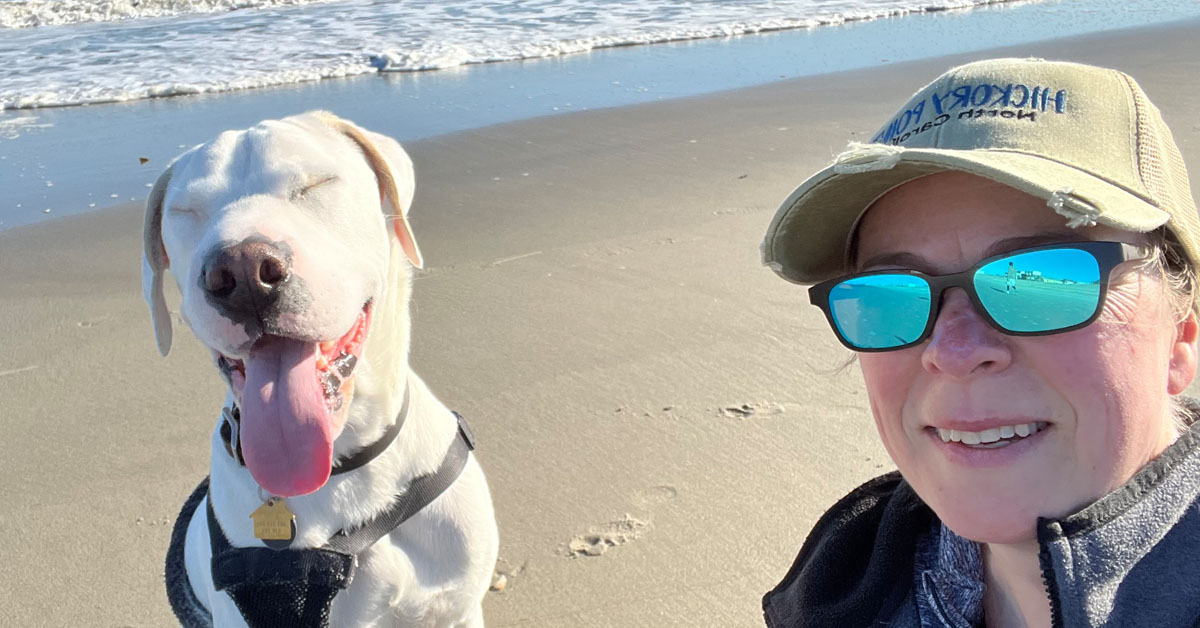
I’m a dog lover. I could talk about my furry friend all day—the antics, the personality, the quirks, the unconditional love—and let’s not even get started on the cost!
Recently, my dog, Blaze, had bilateral eye surgery for entropion. I was worried and wanted to ensure he received the best care. You see, my previous dog, Petey, ended up with just one eye due to an injury he sustained while he was a stray. So, I was determined not to have another one-eyed pup.
Now, why am I sharing my dog stories in an article about Medical Practice Consulting? Well, bear with me, and it will all come full circle.
About two months ago, I was bitten by a stray dog. Being a dog lover, I wanted to prevent the poor pup from getting hit by a car. Blaze and I walk around our neighborhood multiple times a day and know most of the dogs and their owners. However, this particular dog was unfamiliar to me. Though he had a collar, he had no tags. I knocked on a neighbor’s door, thinking the dog resembled theirs. The neighbor confirmed it wasn’t their dog but offered to help find its home. We asked a few neighbors, but no one recognized the dog.
With an emergency vet just a two-minute drive away, my neighbor (Tim) and I attempted to get the dog into his truck. But despite its size, the dog’s short legs made it impossible for him to jump into a 4×4 Ford F250. So, we decided to try my car instead. That turned out to be a mistake. As I leaned over to help the dog into the car, it nipped me on the stomach. It was meant as a warning, and when I squealed and jumped back, the dog looked pitiful, like it hadn’t meant to hurt me—just didn’t want its butt touched. Mind you, it had been happily eating treats from my hand. Given its size and being unaltered, if the dog had intended to harm me, it certainly could have.
We realized the car ride wasn’t happening, and another neighbor came out, claiming the dog might be theirs (though they weren’t entirely sure). Since the dog seemed familiar to them, Tim handed it over, and off they went.
That left me to tend to the bite on my stomach. It broke the skin and was bleeding slightly, but I knew it didn’t require stitches. However, dog bites are notorious for causing infections. Worried about potential complications, I decided to go to urgent care (it was 7:30 PM).
Upon arriving, I noticed an employee seemingly closing up. I called out, “Hey, don’t lock up! I’m heading your way.” To my surprise, she informed me that they weren’t accepting any more patients despite it not being yet 8 pm. I explained that I had been bitten by a dog I didn’t know and didn’t require stitches—I just wanted to be seen by a doctor for prophylactic antibiotics. Her response: a firm “No, we’re full until 8, so no more walk-ins.” Now, it’s worth mentioning that it was a walk-in urgent care. I was baffled. I expressed my confusion, but all she suggested was for me to return the next day or go to the ER. Going to the ER wasn’t ideal due to cost and wait time, but since I couldn’t go in the morning and had no other choice, off to the ER I went.
After checking in and going through the triage process (thankfully, relatively quickly), I found the waiting area packed with people. When I inquired about the wait time, I was informed, “We don’t provide wait times, but it will be quite a while.” So, my husband brought me my laptop and some dinner, and I settled in. Four long hours later, I was finally called back to be seen—not quite midnight yet. I waited a bit longer in the exam room, around 30 minutes, and then a physician assistant (PA) saw me. Unfortunately, the protocol for an unknown dog bite was a rabies shot!
Great. There’s no cure for rabies once you have it, so I didn’t have much of a choice but to go through with the shot. I received one in my arm and multiple injections around the wound. Finally, around 1:30 AM, I was discharged with a prescription for antibiotics and instructions to return to the hospital’s infusion center for four more injections over the next month.
The next day, I contacted my insurance Care Coordinator to explain the situation and inquire about any necessary prior authorizations. She assured me that she would take care of it.
Curious about the cost, I called the infusion center. As many of you may know, the No Surprises Act requires them to provide cost information upon request. However, after numerous phone calls and being transferred between departments, I still had no answer. They could see the orders but didn’t have the CPT code for the injections. Frustrated, I took matters into my own hands and found the code in a coding tool. Armed with the code, I called back and asked for a price estimate. But guess what? They insisted on getting the information from the provider. Frustrating, right? Three days later, when I arrived for my first injection, I still didn’t know the cost. There was no prior authorization either, as the facility was giving my Care Coordinator the same runaround. However, considering the potential consequences, I couldn’t risk not receiving the injection. So, I got it. The injection was relatively painless. The experience thus far, not so much.
The following week, my Care Coordinator called to inform me that the prior authorization had been granted retroactively to the first injection. However, I still had no idea about the cost, as the infusion center would only disclose it to the patient (me). So, I called once again, persistently seeking answers. Finally, someone told me they billed $2,000 for each injection. When I asked about my responsibility, the response was disheartening: “I can’t tell you that.” Can you believe it? I needed to know if I had to prepare to spend $10,000!
Here’s the kicker—when my vet recommended surgery for Blaze, I received a detailed cost estimate with clear expectations. It was easy-peasy, no fuss, no confusion. Everything was upfront and transparent. How is it that my dog’s healthcare experience was better than my own?
If you work in healthcare, it’s vital to help your patients understand their out-of-pocket expenses. Collecting payments upfront and setting clear expectations will ensure everyone is prepared. Most practice management/electronic medical record systems have fee schedule-based estimators—let’s make use of them. Being informed about estimated costs is crucial for a positive patient experience. Whether there are laws or guidelines in place, practicing kindness and providing answers to patients is simply the right thing to do.
I jokingly asked my vet if I could get my rabies vaccine from her since the care, cost, and expectations were much better. We shared a laugh, but she explained that it’s a different vaccine, so it wasn’t possible. Well, I was only half-kidding!
Did you know Sarah Clark Consulting offers a FREE practice self-assessment? CLICK HERE to take the one minute assessment and get some great information to keep the smile on your face while making your practice more efficient!
